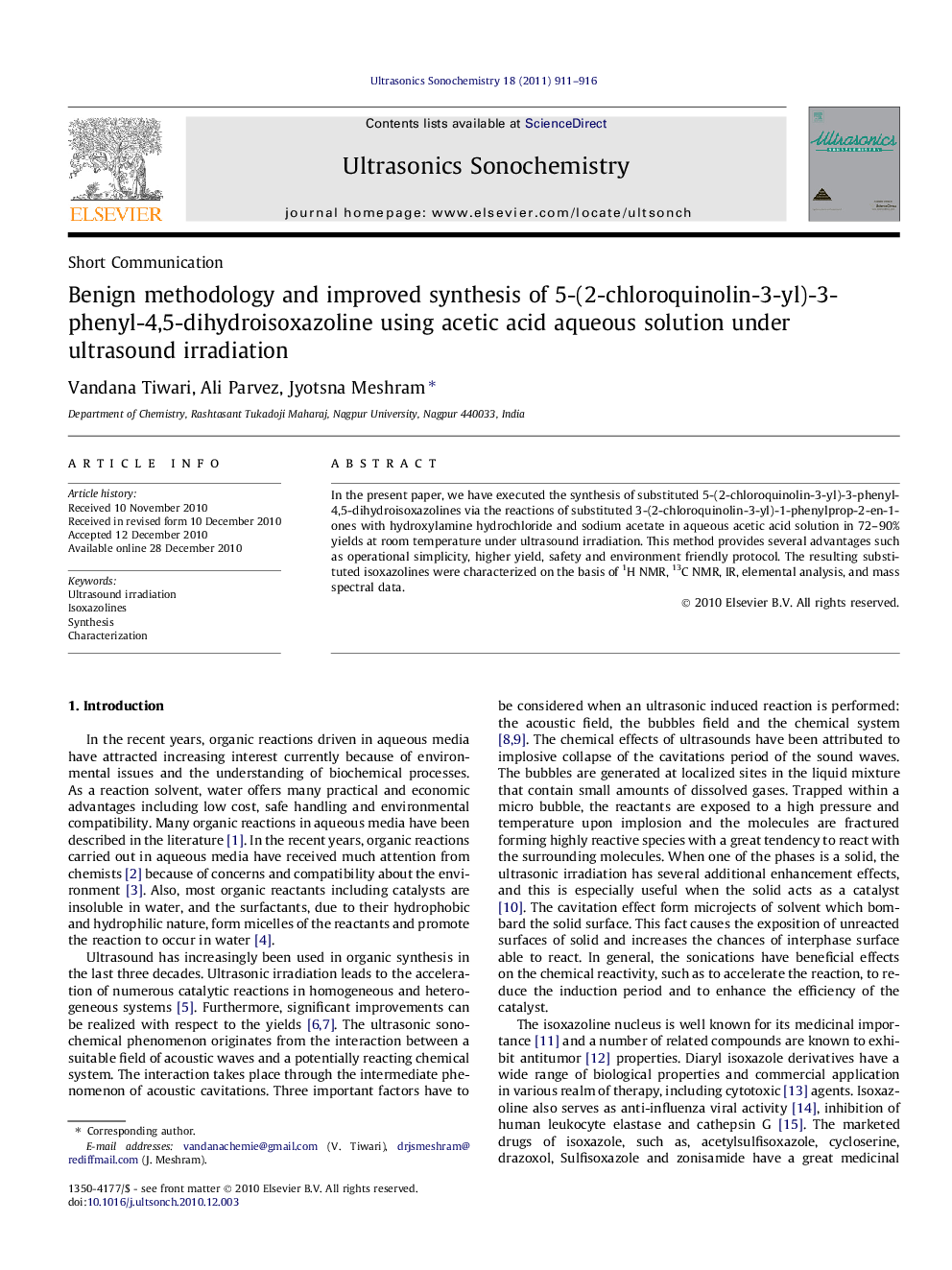| Article ID | Journal | Published Year | Pages | File Type |
|---|---|---|---|---|
| 1266963 | Ultrasonics Sonochemistry | 2011 | 6 Pages |
In the present paper, we have executed the synthesis of substituted 5-(2-chloroquinolin-3-yl)-3-phenyl-4,5-dihydroisoxazolines via the reactions of substituted 3-(2-chloroquinolin-3-yl)-1-phenylprop-2-en-1-ones with hydroxylamine hydrochloride and sodium acetate in aqueous acetic acid solution in 72–90% yields at room temperature under ultrasound irradiation. This method provides several advantages such as operational simplicity, higher yield, safety and environment friendly protocol. The resulting substituted isoxazolines were characterized on the basis of 1H NMR, 13C NMR, IR, elemental analysis, and mass spectral data.
Graphical abstractA series of 5-(2-chloroquinolin-3-yl)-3-phenyl-4,5-dihydroisoxazoline were synthesized under ultrasonic method. The resulting substituted isoxazoline are characterized by 1H NMR, 13C NMR, IR, elemental analysis, and mass spectral data.Figure optionsDownload full-size imageDownload as PowerPoint slideResearch highlights► Green chemical pathway for synthesis of isoxazolines. ► Reactions are carried out in aqueous media under ultrasonic irradiation. ► Sodium acetate in aqueous acetic acid solution is used as catalyst. ► Represents advantages, operational simplicity, higher yield, safety and environment friendly.
